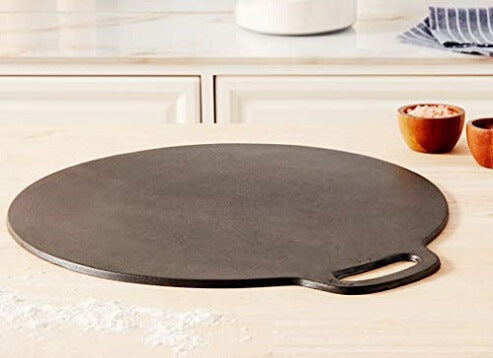Kitchen professionals know that a baking stone is a treasured tool in any culinary arsenal. Not only does it enhance the texture of your bread and pizza crusts, but it also offers an unparalleled cooking experience. However, like all tools, a baking stone needs some tender loving care to maintain its effectiveness. Whether you're dealing with a stained, burnt, or cracked stone, the journey of discovery on how to restore an old baking stone begins now.

Understanding Your Baking Stone
What is a Baking Stone?
A baking stone, also known as a pizza stone, is a flat, usually rectangular or circular piece of stone or ceramic used in conventional and convection ovens for baking goods. It absorbs and distributes heat evenly, which results in even baking and crisper crusts.
The Importance of Regular Maintenance
Over time, with extensive use, a baking stone can accumulate food particles, stains, and might even develop cracks. The performance and longevity of your baking stone largely depend on how well it is maintained. So, understanding the process of how to restore an old baking stone is crucial in preserving its quality.
Steps to Restore Your Baking Stone
Initial Cleaning: Removing Stubborn Stains
Before you dive into the restoration process, start by removing any food residues. A simple way is to use a stiff brush or plastic scraper. Avoid using soap as it can be absorbed by the stone and affect the taste of future bakes.
Dealing with Cracks
If you find minor cracks, don't fret. You can still use your stone effectively by treating it with care. Avoid exposing it to rapid temperature changes, as this can exacerbate the cracks.
Restoring Shine and Functionality
Once you've cleaned and assessed the condition of your stone, you may use a fine-grade sandpaper to gently smooth out any rough edges or surfaces. This will help restore the stones appearance and performance.
Maintaining the Longevity of Your Baking Stone
Best Practices for Stone Storage
Where and how you store your stone affects its longevity. Always ensure your stone is completely dry before storing it to prevent mold and mildew. For detailed tips, you can explore proper storage methods.
Preventing Future Damage
Avoid using metal utensils which can scratch the surface. Instead, opt for wooden or silicone tools. For a full guide on prevention, check out these prevention tips.
Conclusion
The art of restoring and maintaining a baking stone is essential for any kitchen professional looking to perfect their baked creations. By understanding how to restore an old baking stone and implementing preventive measures, you can ensure your baking stone remains a key player in crafting delightful dishes.
FAQ
How often should I clean my baking stone?
It's recommended to clean your baking stone after each use to prevent buildup of food particles. However, a deep clean can be done every few months depending on usage.
Can I use soap to clean my baking stone?
No, soap should be avoided as the porous material of the stone can absorb it, affecting the taste of your food.
What should I do if my baking stone cracks?
If the crack is minor, the stone can continue to be used cautiously. Avoid exposing it to extreme temperatures to prevent further damage.
This article contains affiliate links. We may earn a commission at no extra cost to you.





Leave a comment
This site is protected by hCaptcha and the hCaptcha Privacy Policy and Terms of Service apply.